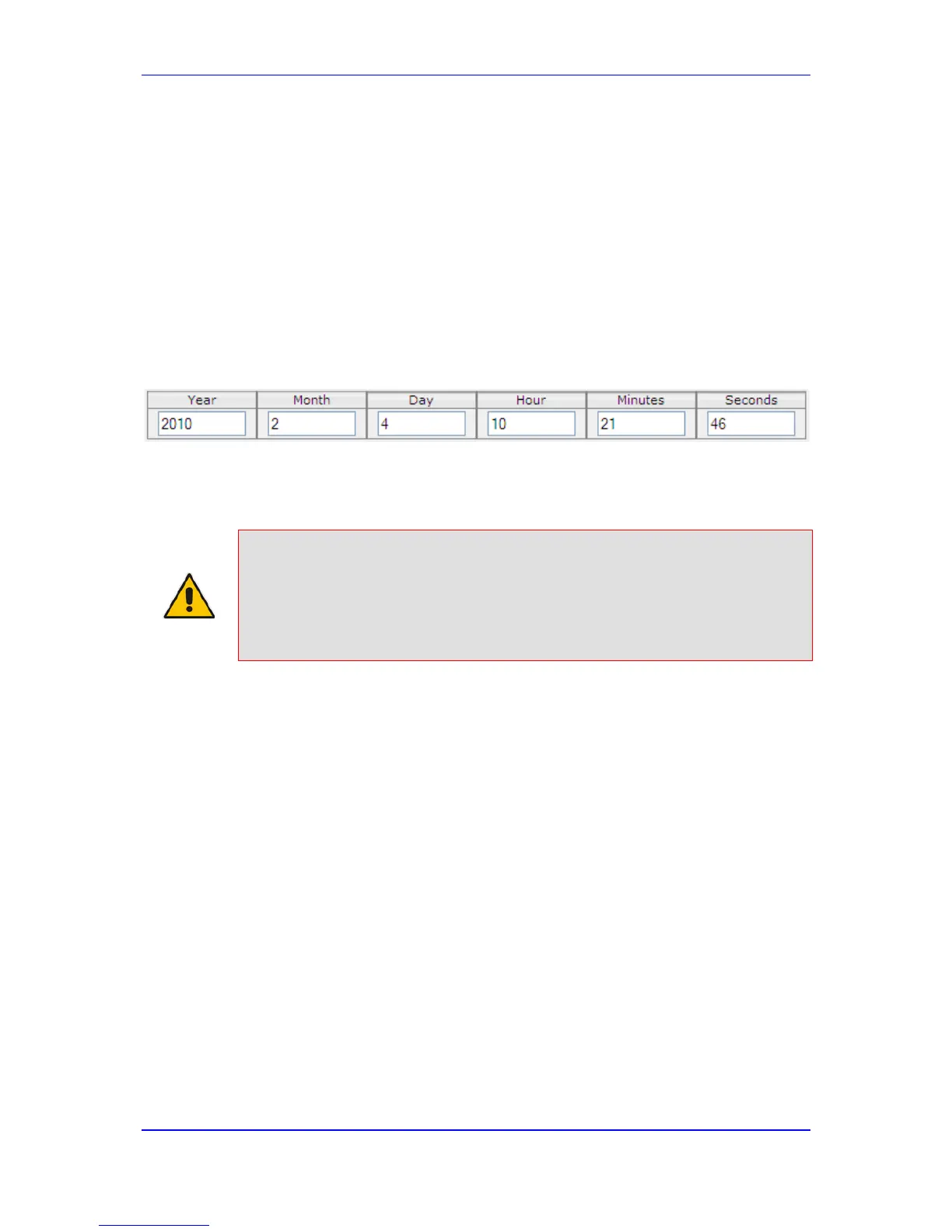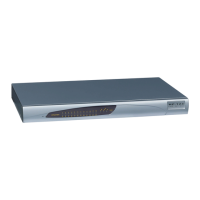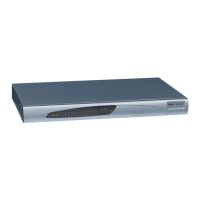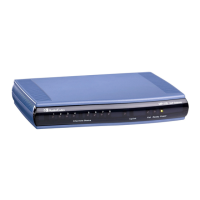10 Date and Time
The date and time of the device can be configured manually or it can be obtained
automatically from a Simple Network Time Protocol (SNTP) server.
10.1 Configuring Date and Time Manually
The date and time of the device can be configured manually.
To manually configure the device's date and time, using the Web interface:
1. Open the Regional Settings page (Configuration tab > System menu > Regional
Settings).
Figure 10-1: Regional Settings Page
2. Enter the current date and time of the geographical location in which the device is
installed.
3. Click the Submit button.
Notes:
• If the device is configured to obtain the date and time from an SNTP
server, the fields on this page are read-only, displaying the received date
and time.
• After performing a hardware reset, the date and time are returned to their
defaults and thus, should be updated.
10.2 Automatic Date and Time through SNTP Server
The Simple Network Time Protocol (SNTP) client functionality generates requests and
reacts to the resulting responses using the NTP version 3 protocol definitions (according to
RFC 1305). Through these requests and responses, the NTP client synchronizes the
system time to a time source within the network, thereby eliminating any potential issues
should the local system clock 'drift' during operation. By synchronizing time to a network
time source, traffic handling, maintenance, and debugging become simplified for the
network administrator.
The NTP client follows a simple process in managing system time: the NTP client requests
an NTP update, receives an NTP response, and then updates the local system clock based
on a configured NTP server within the network.
The client requests a time update from a specified NTP server at a specified update
interval. In most situations, this update interval is every 24 hours based on when the
system was restarted. The NTP server identity (as an IP address or FQDN) and the update
interval are user-defined, or an SNMP MIB object (refer to the Product Reference Manual).
When the client receives a response to its request from the identified NTP server, it must
be interpreted based on time zone or location offset that the system is to a standard point
of reference called the Universal Time Coordinate (UTC). The time offset that the NTP
client uses is configurable.
If required, the clock update is performed by the client as the final step of the update
process. The update is performed in such a way as to be transparent to the end users. For
instance, the response of the server may indicate that the clock is running too fast on the

